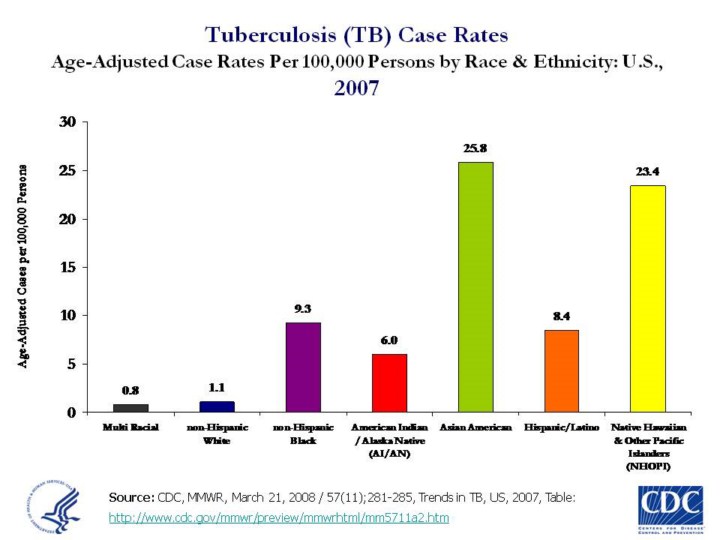| front |1 |2 |3 |4 |5 |6 |7 |8 |9 |10 |11 |12 |13 |14 |15 |16 |17 |18 |19 |20 |21 |22 |23 |24 |25 |26 |27 |28 |29 |30 |31|32 |33 |34 |35 |36 |37 |38 |39 |40 |41 |42 |43 |44 |45 |46 |47 |48 |49 |50 |51 |52 |53 |54 |55 |56 |57 |58 |review |
 |
Updated 6/2/08 by SB. Age-Adjusted Case Rates Per 100,000 Persons by Race/Ethnicity for Tuberculosis (TB): U.S., 2001 Asian Americans and Pacific Islanders (AAPIs) are 2.4 times as likely to have Tuberculosis (TB) as African Americans, and 5.8 times as likely as all races. (JW)
Several important factors likely contribute to the disproportionate burden of TB in minorities. In foreign-born persons from countries where TB is common, TB disease may result from infection acquired in the country of origin. In racial and ethnic minorities, unequal distribution of TB risk factors, such as HIV infection, may also contribute to increased exposure to TB or to an increased risk of developing TB once infected with M. tuberculosis. However, much of the increased risk of TB in minorities has been linked to lower socioeconomic status and the effects of crowding, particularly among U.S.-born persons. (14)
Slide source (15) Source: CDC, MMWR, March 21, 2008 / 57(11);281-285, Trends in TB, US, 2007, Table: http://www.cdc.gov/mmwr/preview/mmwrhtml/mm5711a2.htm
|